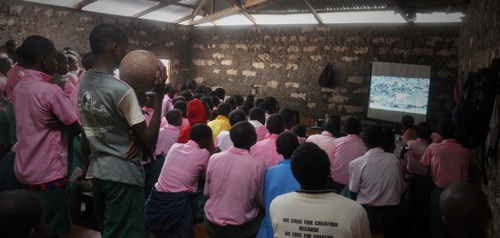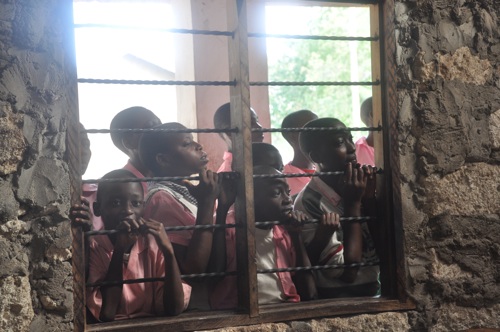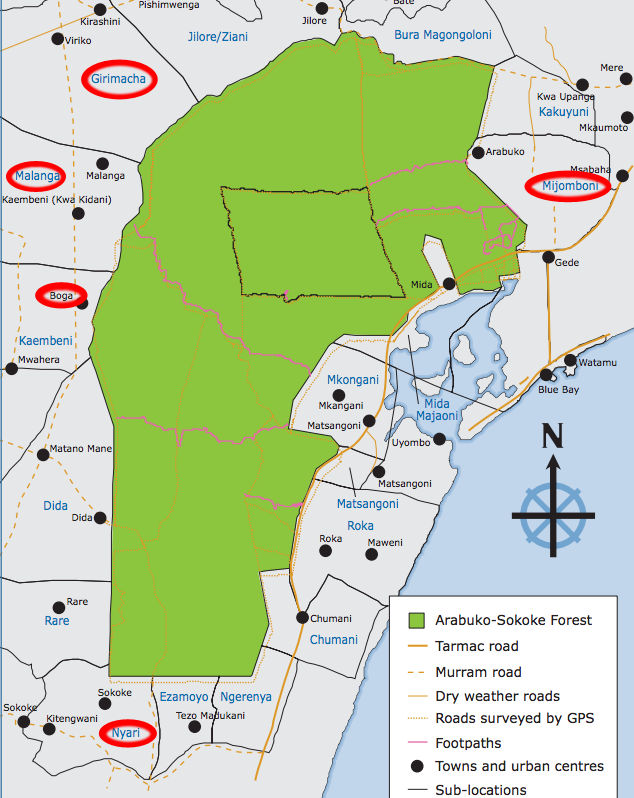 On last Thursday morning, with Festus, Henry, Patrick and Ayoti, we set off on a trip to visit as many of our ASSETS primary schools as possible. Our (optimistic) aim was to see 7 or 8 of the 10 schools ASSETS work with, but in the end we managed to visit 5, which already filled a long but very interesting day! We made our way around the Arabuko Sokoke Forest, starting with Mijomboni Primary, just past Gede on the Eastern boarder of the Forest. We were greeted by the Wildlife Patron there, who showed us around the different projects led by the Wildlife Club, the Muvera Wa ASSETS cluster (both have tree nurseries), as well as a new initiative led by teachers, who planted kale and peanuts to provide for their lunch. (See picture below). They even had a banana tree, which is pretty impressive in this rather arid land! Overall, the compound was very green, and the school led a lot of encouraging initiatives.
On last Thursday morning, with Festus, Henry, Patrick and Ayoti, we set off on a trip to visit as many of our ASSETS primary schools as possible. Our (optimistic) aim was to see 7 or 8 of the 10 schools ASSETS work with, but in the end we managed to visit 5, which already filled a long but very interesting day! We made our way around the Arabuko Sokoke Forest, starting with Mijomboni Primary, just past Gede on the Eastern boarder of the Forest. We were greeted by the Wildlife Patron there, who showed us around the different projects led by the Wildlife Club, the Muvera Wa ASSETS cluster (both have tree nurseries), as well as a new initiative led by teachers, who planted kale and peanuts to provide for their lunch. (See picture below). They even had a banana tree, which is pretty impressive in this rather arid land! Overall, the compound was very green, and the school led a lot of encouraging initiatives.

We then moved on to Girimacha, on the Western side of the Forest boarder. This school was located in a very dry area, so struggled a bit more with tree planting and sustaining tree nurseries. But they were still at it, as the picture below shows! They will be planting these trees just before the next rain season, so around September. The WCK patron also explained that they were reaching the end of their food reserves provided by the government, reserves which never last the whole term (last term, they only received food for 42 days out of 72). This food is very important, as providing a lunch in school has made a big difference in enrolment rates. A lot of the primary schools around the forest receive food with this programme led by the Ministry of Education.

Our third school was a bit further south, Malanga Primary School. This school was quite similar to the previous one, with efforts being made to plant trees despite the dryness of the area. The conditions make it more difficult to have a green compound, and plant many trees. As we can see on the picture, pupils also receive lunch there, as long as the government provides enough food.

Boga Matchuko, the fourth school we visited, stood out from the previous ones, as we were impressed by the academic level of the pupils (a few of them moving on to some of the most prestigious secondary schools in Kenya) as well as the dynamism of the Wildlife Club and Muvera cluster. A fishpond has recently been installed, which is a unique initivative in the district, and could be an alternative source of income. They also have a weather station, which, with a bit of restoration, could be a great activity for the Wildlife Club. Their tree nursery was impressively well-kept and green. This was a real encouragement for us to see the change that took place over the past few years in cooperation with ASSETS!

Finally, our last school was Nyari Primary School, south of the Forest. This school, situated on a depression, has really made the most of its conditions, and is also very dynamic, with 2 Wildlife Patrons working together to make school compound more green by planting grass, as it has already been done, and care for the tree nursery. They also hosted pupils from Aga Khan Primary school in Mombasa, and planted trees together just next to the school grounds. Despite a few problems (a leaking water tank), this school was also a real encouragement, we were delighted to see how motivated and committed the WCK patrons were. Like the weather station in Boga, the water tank could be easily repaired with some simple manual help, which ASSETS is keen to provide.

All in all this was a rich and encouraging day for everyone, for Wildlife Patrons as well as for the ASSETS team. We are thankful for everything that ASSETS has implemented so far and the difference its made, and are full of ideas for the future!







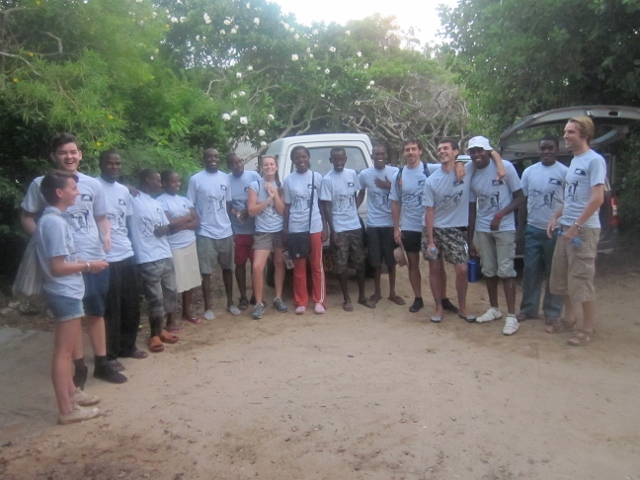
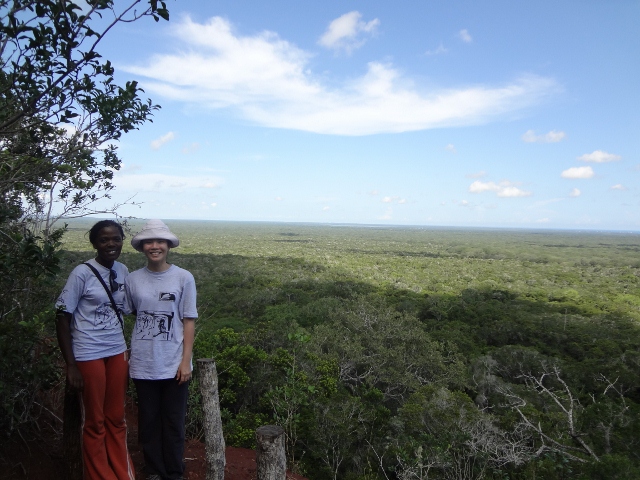


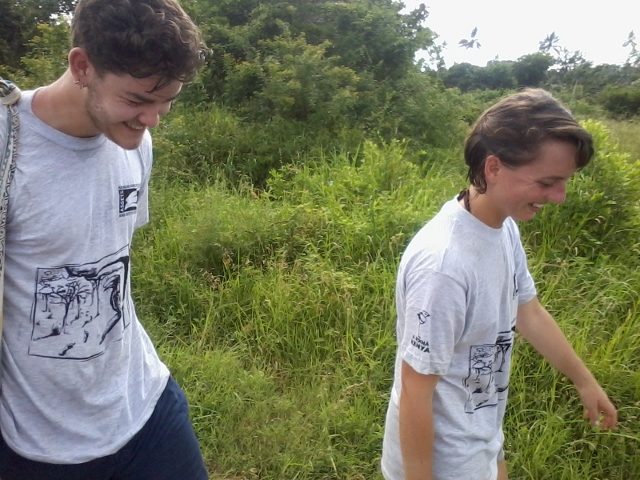

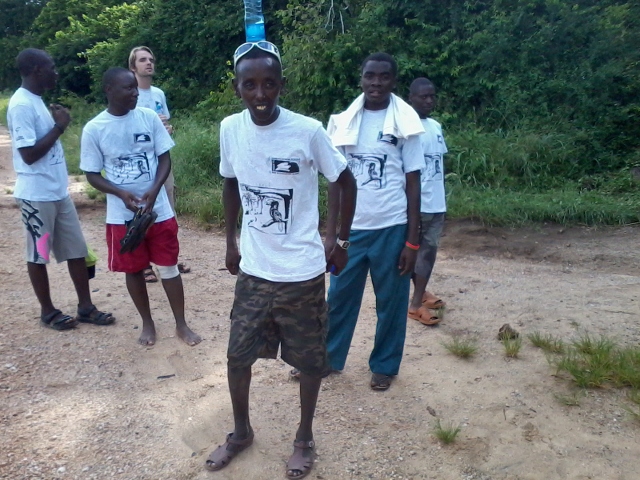


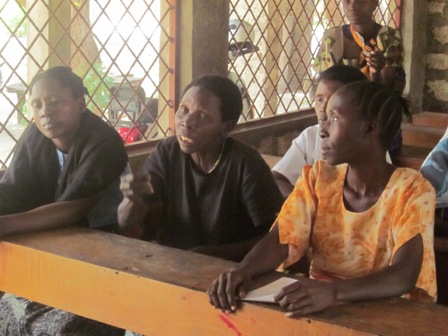












 On last Thursday morning, with Festus, Henry, Patrick and Ayoti, we set off on a trip to visit as many of our ASSETS primary schools as possible. Our (optimistic) aim was to see 7 or 8 of the 10 schools ASSETS work with, but in the end we managed to visit 5, which already filled a long but very interesting day! We made our way around the Arabuko Sokoke Forest, starting with Mijomboni Primary, just past Gede on the Eastern boarder of the Forest. We were greeted by the Wildlife Patron there, who showed us around the different projects led by the Wildlife Club, the Muvera Wa ASSETS cluster (both have tree nurseries), as well as a new initiative led by teachers, who planted kale and peanuts to provide for their lunch. (See picture below). They even had a banana tree, which is pretty impressive in this rather arid land! Overall, the compound was very green, and the school led a lot of encouraging initiatives.
On last Thursday morning, with Festus, Henry, Patrick and Ayoti, we set off on a trip to visit as many of our ASSETS primary schools as possible. Our (optimistic) aim was to see 7 or 8 of the 10 schools ASSETS work with, but in the end we managed to visit 5, which already filled a long but very interesting day! We made our way around the Arabuko Sokoke Forest, starting with Mijomboni Primary, just past Gede on the Eastern boarder of the Forest. We were greeted by the Wildlife Patron there, who showed us around the different projects led by the Wildlife Club, the Muvera Wa ASSETS cluster (both have tree nurseries), as well as a new initiative led by teachers, who planted kale and peanuts to provide for their lunch. (See picture below). They even had a banana tree, which is pretty impressive in this rather arid land! Overall, the compound was very green, and the school led a lot of encouraging initiatives.




